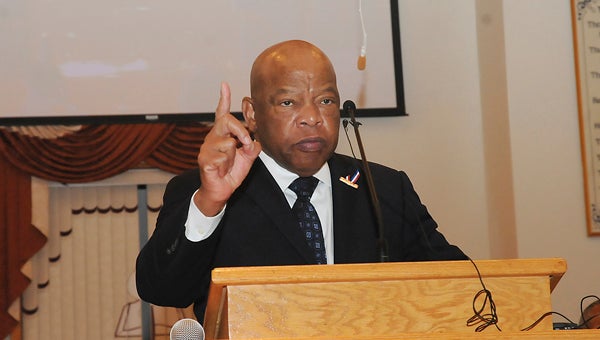Low-income areas targeted by loan businesses
Published 6:58 pm Thursday, December 26, 2013
Editor’s note: This is the first in a look by the Times-Journal at the payday loan business.
No credit check, approved cash now and fast cash when you need it are all phrases dotting the Selma streetscape, enticing residents to take out quick payday loans, but the loans may not be the best option to cover holiday expenses.
Many payday loan agencies’ charge 450 percent in annual percentage rates — astronomically more than the 20 percent on many credit cards. APR determines the amount consumers pay. The amount paid back on a 450 percent loan would be light years above a typical loan or credit card payment.
Payday loan APR in Alabama isn’t currently governed by any legislation, but State Rep. Patricia Todd (D-Birmingham) and several other legislators sponsored two bills during the 2013 legislative session to impose a limit on the APR that could be charged. Though the bill stalled because of efforts from industry lobbyists, Todd said payday loans remain a danger, especially in low-income areas.
“People who are living on the edge of economic stability don’t have credit cards, they don’t have a bank account so when a car breaks down or they have a health issue, they see payday loans as a quick fix to their problem,” she said. “There’s a reason that you only see them in poor neighborhoods — they don’t really know how the interest rates accumulate. You can make money; you’re a business, I don’t have a problem with that, but you cannot take advantage of a disadvantaged community.”
Payday loans often set a 14-day timeline for the loan to be paid back and require proof of identification, such as a picture identification card and proof of income.
Some also require a checking account, but Todd said Alabama residents, especially in poor communities, may not be able to pay the loan back at the deadline. As a result, they fall into a cyclical routine of taking out loans to pay off previous debt.
“You’re constantly facing the money to pay off the first one,” she said. “If you don’t have $300 to pay for car repairs on Monday, the chances of you having the money to pay of the loan in 14 days is pretty nonexistent, so you keep paying the interest rate and the original debt keeps growing.”
With the legislative session beginning in January, Todd said she plans to draft another payday loan bill to combat high interest rates.
Alabama isn’t the only state facing a payday loan problem, but the loans do consume the largest percentage of a borrower’s biweekly income in the nation in Alabama — 37 percent — according to a study by the Pew Research Center. Alabama, tied with Alaska, is 12 percent above every other state. That means Alabama borrowers are left with less income to spend on everyday needs, like food, water, or electricity.
“Payday borrowers can afford $50 per two weeks toward servicing small-loan debt — enough to renew or reborrow a loan, but not enough to repay the $400 or so typically required to pay it off,” the study found.
It concluded the loans are unaffordable for most, equaling one-third of a typical borrower’s income and recommended five options for policy makers to follow — limit payments to an affordable percentage of a borrower’s periodic income, spread costs evenly over the life of the loan, guard against harmful repayment or collection practices, require concise disclosures that reflect both periodic and total costs and set maximum allowable charges for those with poor credit.
But implementing any changes in Alabama could be a difficult feat because of lobbying pressure, according to Todd.
“(The payday loan industry) keep legislators in line with donations and rhetoric,” she said. “This is one issue where we have overwhelming public support and even the government entity that regulates banking supports it, but we can’t get the legislature to do it.”



